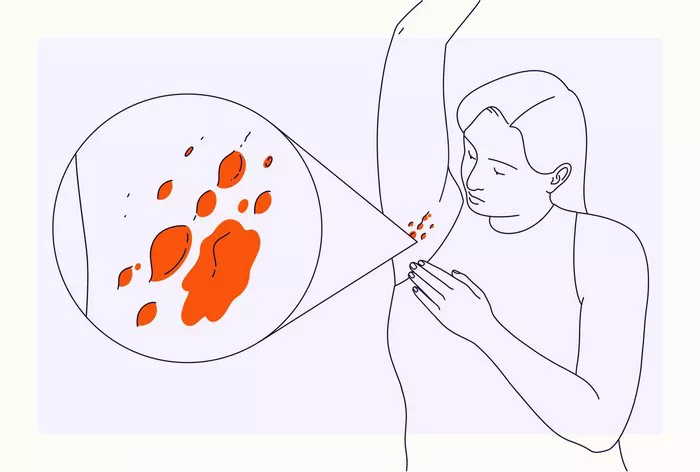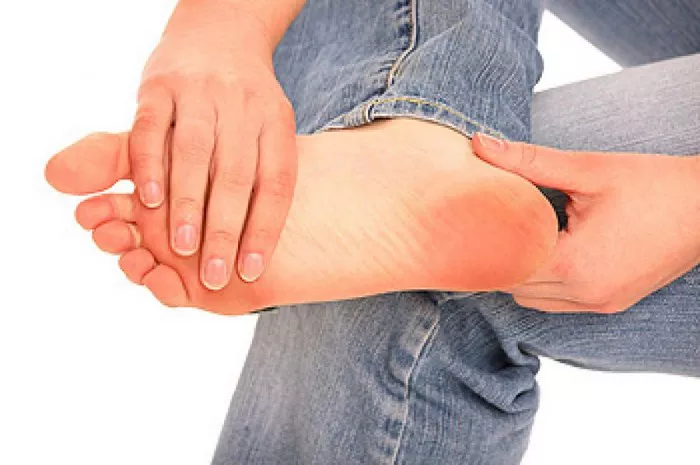Hidradenitis Suppurativa (HS), a chronic inflammatory skin condition, manifests as painful lesions, abscesses, and nodules primarily in areas rich in apocrine glands, such as the armpits, groin, and buttocks. Despite significant advancements in medical research, the precise etiology of HS remains elusive. One of the most challenging aspects of managing HS is the unpredictability of flare-ups. These sudden exacerbations in symptoms significantly impact patients’ quality of life, often leading to physical discomfort and emotional distress. Understanding the triggers behind HS flares is paramount in devising effective management strategies and improving patient outcomes.
The Multifactorial Nature of HS Flares
HS flares result from a complex interplay of genetic predisposition, environmental factors, immune dysregulation, and lifestyle choices. Although the exact mechanism remains poorly understood, several triggers have been identified, shedding light on the multifactorial nature of this debilitating condition.
Genetic Predisposition
Genetic factors play a crucial role in predisposing individuals to HS. Studies have shown a familial clustering of the disease, suggesting a genetic component in its pathogenesis. Variations in genes associated with the immune system, such as the NOD2/CARD15 gene, have been implicated in increasing susceptibility to HS. Additionally, mutations in genes involved in inflammatory pathways, including those encoding for tumor necrosis factor-alpha (TNF-α), interleukin-1 (IL-1), and interleukin-10 (IL-10), contribute to the dysregulated immune response observed in HS.
Environmental Triggers
Environmental factors can exacerbate HS symptoms and trigger flare-ups. Friction and sweating in intertriginous areas, exacerbated by tight clothing or excessive physical activity, can worsen inflammation and lead to the formation of new lesions. Moreover, exposure to cigarette smoke, air pollution, and certain dietary factors, such as high glycemic index foods and dairy products, has been linked to increased disease severity in some individuals. Furthermore, hormonal fluctuations, particularly during menstruation or pregnancy, can influence the inflammatory milieu and precipitate HS flares in susceptible individuals.
Immune Dysregulation
HS is characterized by aberrant immune activation and dysregulated cytokine production within the affected skin. Disruption of the skin barrier function allows for the ingress of bacteria, leading to the formation of sterile abscesses and inflammatory cascades. Dysfunctional innate immune responses, including impaired phagocytosis and increased production of pro-inflammatory cytokines, contribute to the chronic inflammatory state observed in HS. Furthermore, alterations in the composition of the skin microbiome, with an overabundance of pathogenic bacteria such as Staphylococcus aureus, further perpetuate the inflammatory process and trigger flare-ups.
Lifestyle Factors
Certain lifestyle choices can influence the course of HS and predispose individuals to flare-ups. Obesity, for instance, is a well-established risk factor for HS, with adipose tissue serving as a reservoir for pro-inflammatory mediators and adipokines. Smoking has also been associated with increased disease severity and higher rates of treatment failure in patients with HS, likely due to its detrimental effects on immune function and wound healing. Additionally, stress and psychological factors can exacerbate HS symptoms through neuroendocrine pathways, further underscoring the importance of holistic management approaches that address both physical and emotional well-being.
Clinical Considerations and Management Strategies
In clinical practice, identifying and addressing potential triggers for HS flares is essential in optimizing treatment outcomes and improving patients’ quality of life. A comprehensive approach that encompasses pharmacological interventions, lifestyle modifications, and patient education is paramount in effectively managing this chronic condition.
Pharmacological Interventions
Pharmacotherapy remains the cornerstone of HS management, aimed at reducing inflammation, controlling infection, and alleviating symptoms. Topical and systemic antibiotics, such as clindamycin and tetracyclines, are commonly prescribed to suppress bacterial overgrowth and mitigate disease activity. In more severe cases, biologic agents targeting specific inflammatory pathways, including TNF-α inhibitors (e.g., adalimumab) and IL-17 inhibitors (e.g., secukinumab), have shown promising results in reducing lesion count and improving quality of life.
Lifestyle Modifications
Adopting healthy lifestyle habits can complement pharmacological therapy and help minimize HS flare-ups. Weight loss through dietary modifications and regular exercise has been shown to ameliorate disease severity in overweight or obese individuals with HS. Moreover, wearing loose-fitting clothing made of breathable fabrics can reduce friction and moisture accumulation in susceptible areas, thereby preventing new lesion formation. Avoiding smoking and minimizing exposure to environmental pollutants are also advisable to mitigate disease exacerbations.
Patient Education and Support
Empowering patients with knowledge about their condition and self-management strategies is crucial in fostering adherence to treatment and promoting disease control. Educating patients about potential triggers for HS flares, such as friction, sweating, and hormonal fluctuations, enables them to make informed lifestyle choices and implement preventive measures proactively. Additionally, providing psychosocial support and connecting patients with peer support groups or counseling services can help address the emotional burden associated with living with a chronic skin condition like HS.
Conclusion
Hidradenitis Suppurativa is a chronic inflammatory skin disorder characterized by painful nodules, abscesses, and sinus tracts, primarily affecting intertriginous areas. Although the exact cause of HS remains unknown, a multitude of genetic, environmental, immune, and lifestyle factors contribute to disease pathogenesis and trigger flare-ups. By elucidating the complex dynamics underlying HS flares, healthcare providers can tailor management strategies to address individual patient needs effectively. A holistic approach that integrates pharmacological interventions, lifestyle modifications, and patient education is essential in mitigating disease activity, improving quality of life, and promoting long-term disease control for individuals living with HS.
























